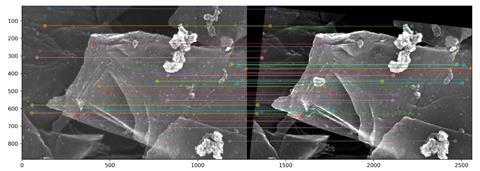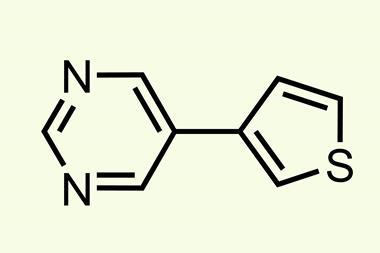Tracking a palladium catalyst in space and time has revealed that nanoparticles are a catalyst poison: they capture and inactivate the small amount of single atoms that do the overwhelming amount of catalytic work.
‘This is very surprising outcome and contradicts the generally accepted approach to catalyst design in this area,’ says Valentine Ananikov from the Russian Academy of Sciences. ‘In many studies of catalytic cross-coupling reactions, as well as many other reactions in fine organic synthesis, it is typically assumed that metal nanoparticles represent an active form of the catalyst.’
Ananikov’s team managed, for the first time, to snap images of the same nanosized patch in a heterogeneous palladium catalyst (palladium on carbon) before and after it goes through a cross-coupling reaction. This allowed them to track exactly what happens to palladium clusters, nanoparticles and even single atoms.
As even a millimetre-sized area is enormous under the huge magnifications of an electron microscope, finding the same spot pre- and post-reaction initially seemed impossible, says Ananikov. But by using a machine-learning algorithm to analyse the unique patterns of the catalyst support, the team were able to align and process pre-and post-reaction images within minutes.

The comparison revealed significantly fewer single palladium atoms after the reaction than before. Closely spaced nanoparticles formed bridges or merged together after the reaction. In fact, less than 1% of the palladium was responsible for all the catalytically activity. The other 99% simply sat on the carbon surface as ‘dead’ nanoparticles – and these snatch up and inactivate the single atoms.
‘The most important thing, from my point of view, is that nanoparticles may act as poison for a single-atom catalyst,’ says Edwin Baquero who works on nanoparticle catalysis at the National University of Colombia. It would be unbelievable, he says, had he not seen the results.
Baquero points out that the study also challenges conventional wisdom about single-atom catalysts remaining surface-bound. In this case, palladium atoms seamlessly move between heterogeneous and homogeneous catalysis – they hop into the reaction solution to do their catalytic work.
Ananikov and his team are now working on finding a way to reconfigure nanoparticles back into single atoms during the reaction. A catalyst that consists entirely of single atoms would most likely have a greater proportion of active palladium, suggests Ananikov. ‘But only if we can find a way to stabilise the catalyst in a single atomic form.’
While Ananikov’s experiments only cover two cross-coupling reactions, Baquero thinks that other researchers will start investigating many more reactions using time-and-space tracking. He’s impressed by how quick work the machine-learning algorithm makes of finding the right spot – a task that would take humans hours. ‘This is the best way to see the real change in nanoparticles or in supported catalysts.’
The main thing chemists should take away from the discoveries, says Ananikov, is that ‘catalytic centres are not pre-formed static structures’.

















No comments yet